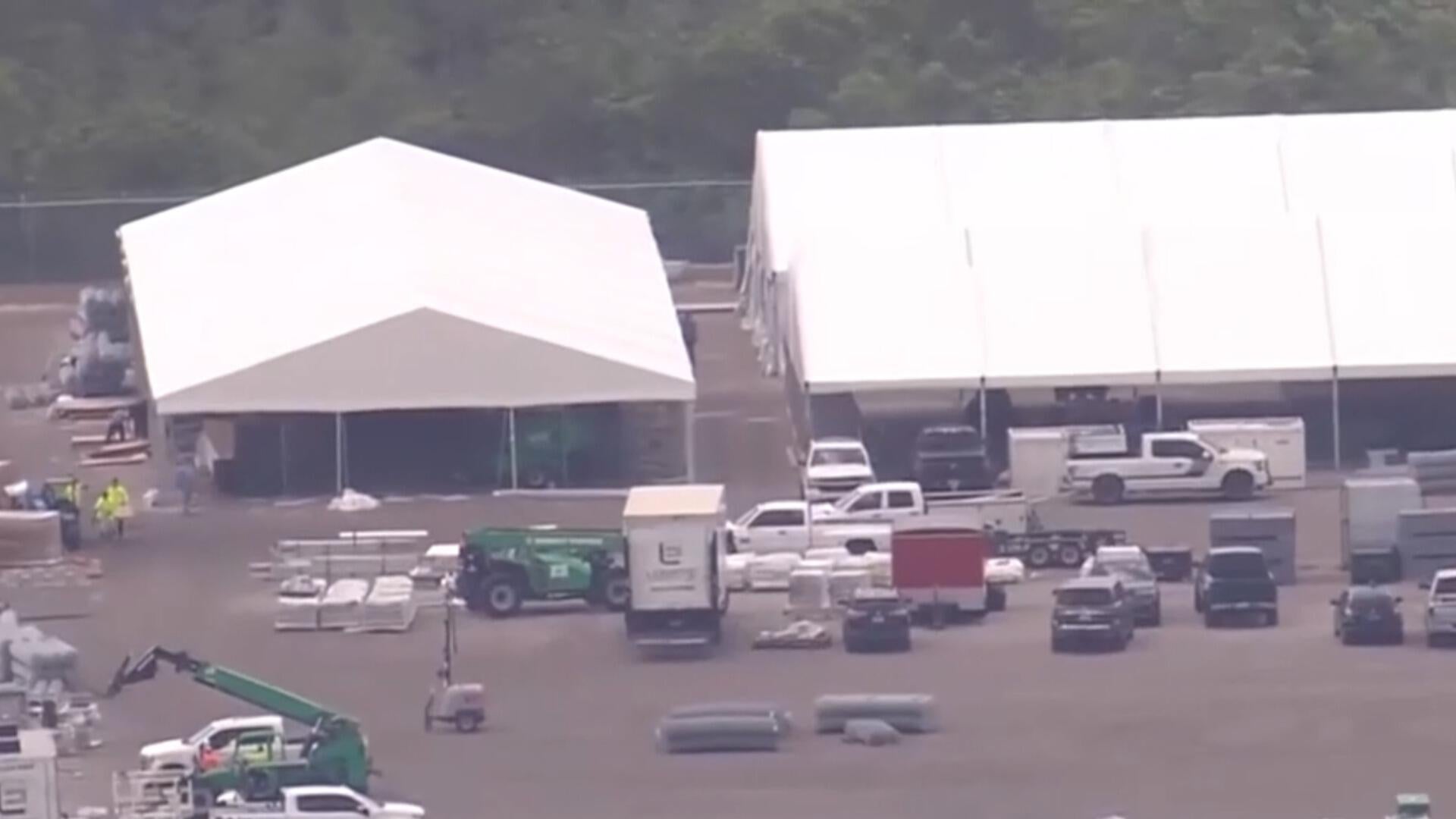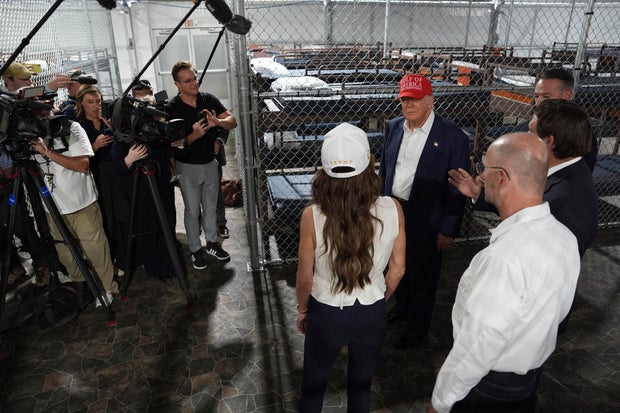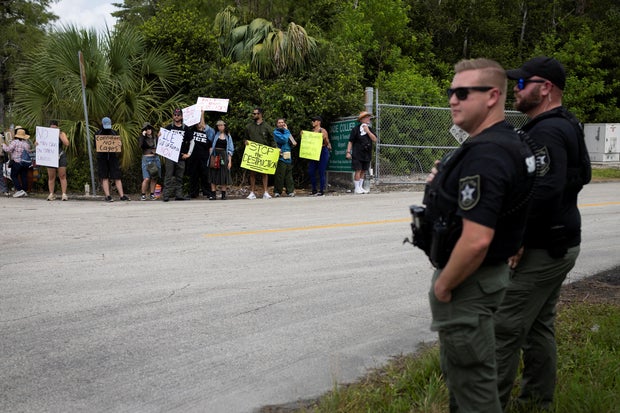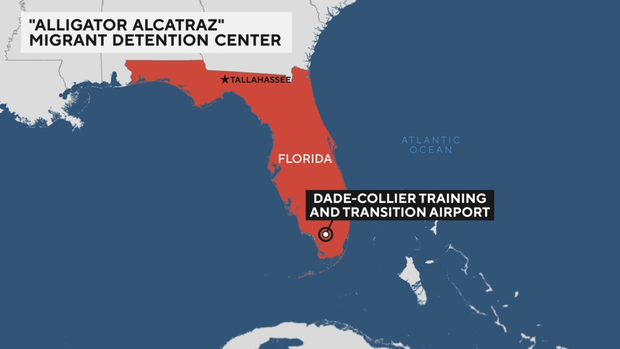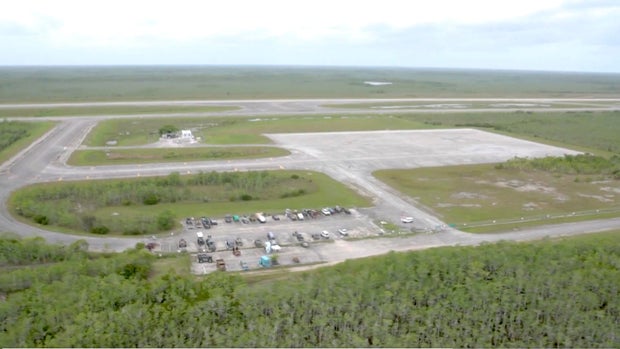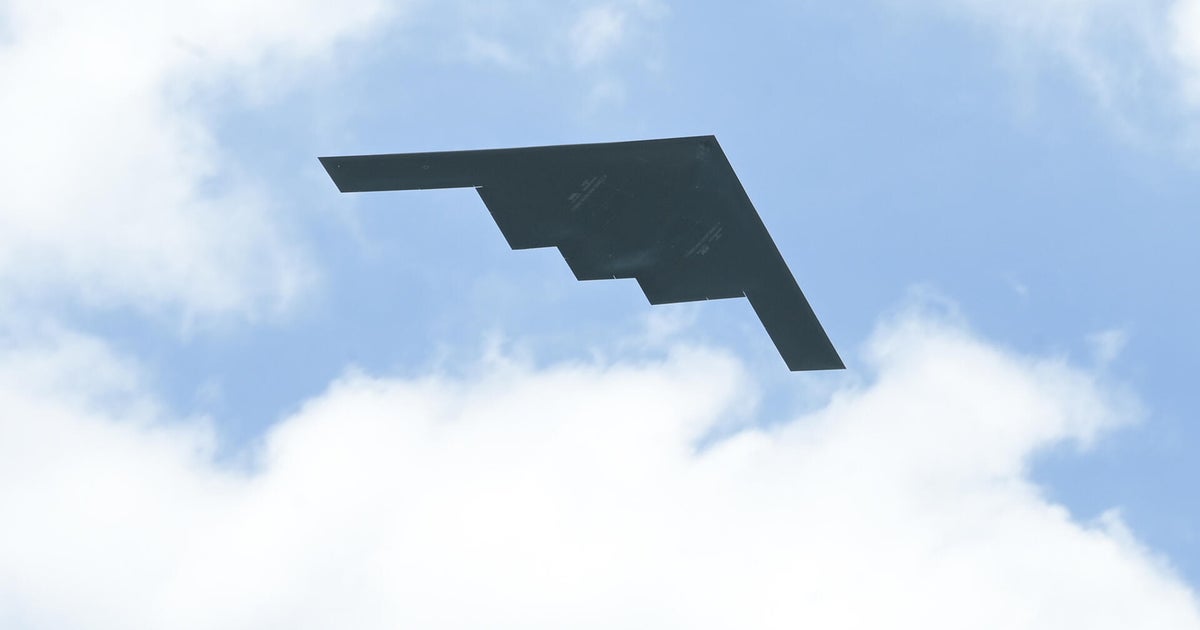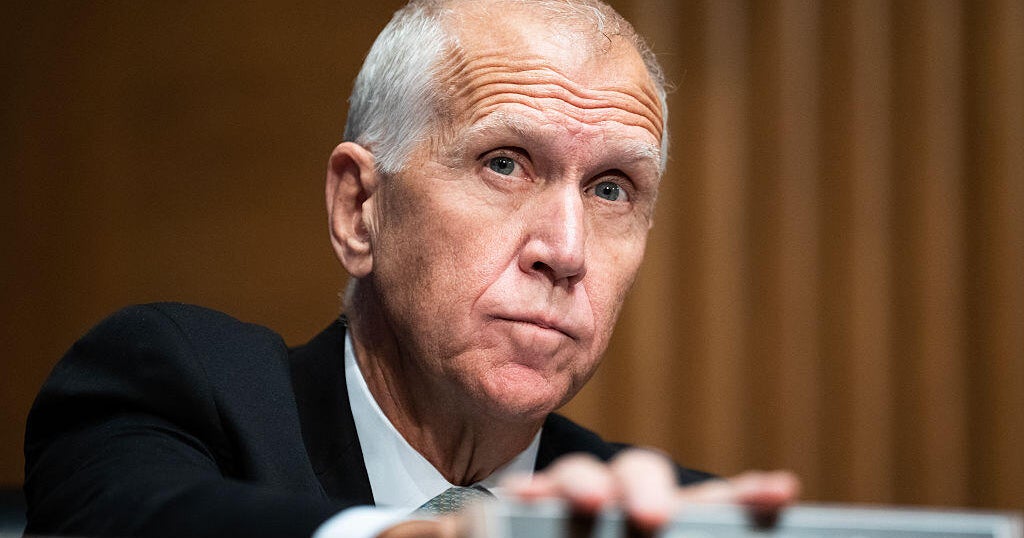Trump tours "Alligator Alcatraz" immigration detention center in Florida
Washington — President Trump on Tuesday toured the site of a new immigration detention center in South Florida that state officials are calling "Alligator Alcatraz."
Florida Gov. Ron DeSantis and Department of Homeland Security Secretary Kristi Noem are visiting the facility alongside the president. The controversial detention facility is at the Dade-Collier Training and Transition Airport in the Florida Everglades, which has its own runway in an environment known for its treacherous terrain and wildlife. Mr. Trump joked in his remarks that "we're going to teach them how to run away from an alligator if they escape prison."
Mr. Trump invited the press to join his tour of the , which he called "so professional and so well done." Rows of bunk beds were lined up behind chain fences.
The president was asked if it could be a model going forward for other detention sites. "It can be," he responded, adding that such a location is rare. Mr. Trump said he'd like to see similar temporary facilities in "many states."
DeSantis said they expect the first occupants of the detention center to arrive Wednesday. DeSantis said the site has been modified in just eight days to accommodate detainees, and he called the center an "effective way" to increase the numbers of removals and deportations of unauthorized immigrants as the state seeks to help the federal government's deportation efforts.
The facility will have up to several thousand beds to house, process and deport individuals who were in the country illegally. Florida officials say the site will have at least 200 security cameras, at least 28,000 feet of barbed wire, 400-plus security personnel, and 24/7 air conditioning.
In a roundtable alongside Mr. Trump, Noem told people who are in the country illegally and who may be watching on TV that they can still "self-deport" and get the chance to return to the United States legally in the future.
"If you don't, you may end up here," Noem said. "And you may end up here and being processed, deported out of this country, and never get the chance to come back."
DeSantis echoed Noem's message. "Why would you want to come through 'Alligator Alcatraz' if you can just go home on your own?" DeSantis said. " I think a lot of people are going to make that decision."
Protesters have gathered outside the gates as construction work proceeded on the site in recent days, and a crowd of demonstrators turned out again Tuesday to protest Mr. Trump's visit, CBS News Miami reported.
Phyllis Andrews, a retired teacher who drove in from Naples, Florida, to join the protest, told The Associated Press, "I have a lot of immigrants I have been working with. They are fine people. They do not deserve to be incarcerated here."
Noem announced last week that the detention facilities in Florida will be funded "in large part" by the Federal Emergency Management Agency, as part of FEMA's shelter and services program, an initiative created by Congress to support groups and cities receiving migrants and asylum-seekers released from federal custody along the U.S.-Mexico border.
"There is only one road leading in and the only way out is a one-way flight," White House press secretary Karoline Leavitt said Monday. "It is isolated, and surrounded by dangerous wildlife in unforgiving terrain."
"They ain't going anywhere once they're there, unless you want them to go somewhere," DeSantis said Monday. "Because good luck getting to civilization. So the security is amazing — natural and otherwise."
Critics of the project include former U.S. Rep. David Jolly, an ex-Republican who is now running for Florida governor as a Democrat, who called the facility a "callous political stunt."
Where is "Alligator Alcatraz"? Map shows site in South Florida
The site of the temporary migrant detention facility in Ochopee, Florida, is located deep in the Everglades, about 50 miles west of Miami, in a wetlands ecosystem known as Big Cypress Swamp.
History of "Alligator Alcatraz" site in Florida Everglades
According to the , Florida officials in the 1960s proposed building a futuristic jetport in the area to support South Florida's booming population. The Dade County Port Authority purchased 39 square miles of remote swampland with plans to build what would have been the largest airport in the world.
But opposition to the Everglades Jetport grew, and the early work on the facility halted in 1970 after a federal report determined that it would "inexorably destroy the South Florida ecosystem and thus the Everglades National Park."
Instead, in the 1970s, a smaller portion of the land was developed into the Dade-Collier Training and Transition Airport, known as TNT, an aviation training facility with only one runway.
The site has about 900 acres of developed and operational land, while the remaining area is managed and operated by the Florida Game and Freshwater Fish Commission.
On June 19, Florida Attorney General James Uthmeier using the TNT site for a temporary facility to house U.S. Immigration and Customs Enforcement detainees. He said the facility could be set up on the already constructed runway.
Last week, environmental groups filed a lawsuit to block the opening of the facility until it undergoes an environmental review as required by federal law.
